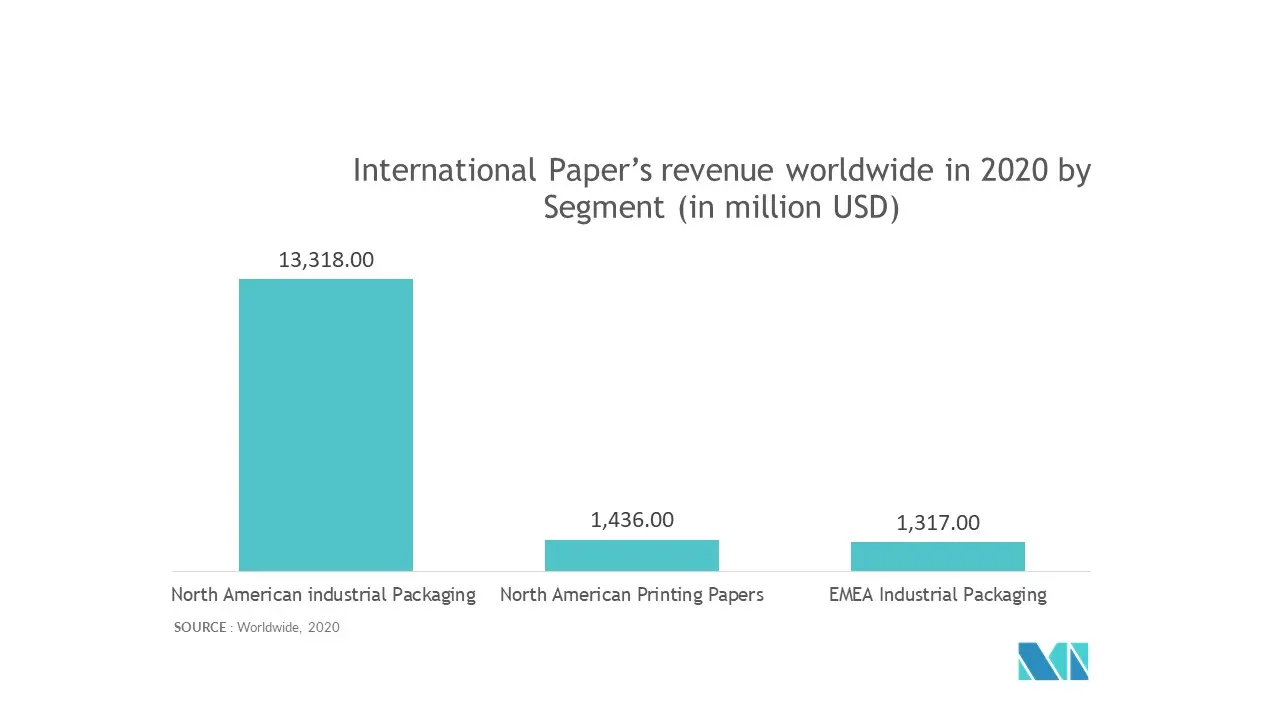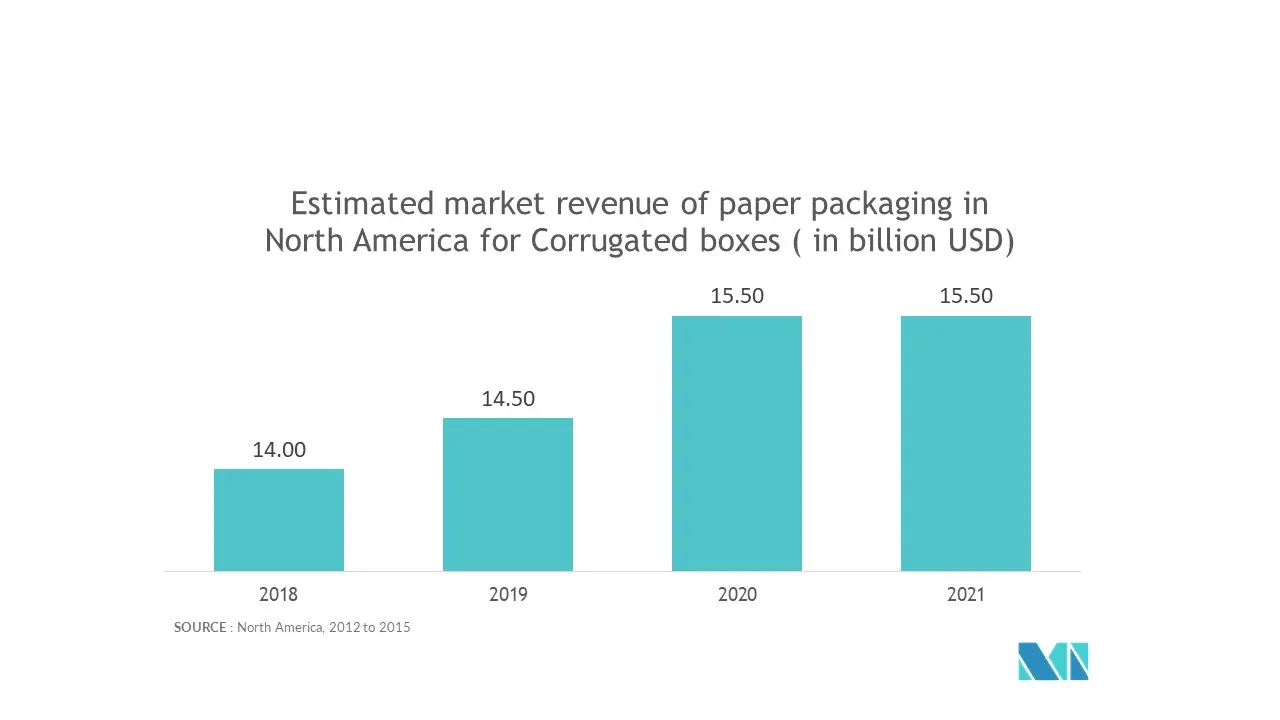Market Trends of North America Paper Packaging Industry
This section covers the major market trends shaping the North America Paper Packaging Market according to our research experts:
Demand for Paper Packaging by Product Type
- Over the decades, there has been growing awareness toward environmental hazards that are related to the disposal and recycling of packaging, with numerous government initiatives and increasingly stringent regulations.
- For instance, Federal Food, Drug, and Cosmetic Act require FDA to ensure that packaging materials do not contaminate food and determine whether new food contact materials are safe or new uses for materials already in use. Although FDA's primary concern is food contact safety for packaging materials, the National Environmental Policy Act (NEPA) requires FDA also to conduct environmental impact assessments of packaging materials.
- Corrugated packaging has emerged as a key driver of this market due to its evolution as a point-of-sale display in retail applications, coupled with continuous development in small flute and high-quality graphics board, which is enabling corrugated boxes to penetrate traditional folding carton applications.
- According to certain studies and estimates, nearly more than half of all paperboard packaging is used in food product segments, such as beverages and dairy products, candy and confectioneries, dry foods, and frozen foods.
- Corrugated cardboard boxes are also the largest in the field of recycled paper, cardboard, and packaging. The corrugated cardboard treatment rate was 96.5%. After disposal, the amount of incineration of corrugated cardboard was 230,000 tons, and the amount of landfill was 940,000 tons.
- According to U.S. Environmental Protective Agency, other papers and cardboard packaging include milk and juice boxes, aseptic boxes for liquid foods and other products packaged in gable top boxes, folding boxes (such as cereal boxes, frozen food boxes, some department store boxes), bags and sacks; wrapping paper. Other packaging materials are made of paper and cardboard (boxes for installation of shoes, cosmetics, candies, etc.).

Rise of Paper Packaging in United States
- More than 60% of all communities in the United States collect and recycle paperboard packaging. Furthermore, companies are also focusing on introducing recyclable paper board products. The Cascades recently launched a cardboard tray made from recyclable fibers. SIG has also launched cartons made from recycled polymers using post-consumer waste.
- As technology becomes increasingly sophisticated and accessible, more and more converters are turning to digital presses to provide customers with speed and flexibility. It has been estimated that high-quality digital printing may become the standard for short-to-medium runs going forward.
- Since the major raw material for paperboard packaging is trees, environmental concerns, coupled with Save the Forest movements, may impact the market. Additionally, paperboard waste is also piling up because the rate of recycling is low compared to the supply and demand.
- The Fibre Box Association, for instance, contends that while 90% of corrugated packaging gets recycled, the remaining 10% still adds up to the environmental waste, which may severely hinder the global market landscape.
- According to the Paper & Paperboard Packaging Environmental Council, Canada, the provinces require Commercial Forest Harvesters to plant new trees and reforestation through direct sowing and natural regeneration. On average, over 1,000 new tree seedlings are planted every minute in Canada.


